Today’s Current Affairs: 6th February 2023 for UPSC IAS exams, State PSC exams, SSC CGL, State SSC, RRB, Railways, Banking Exam & IBPS, etc
Table of Contents
What Is amorphous Ice?

Scientists have fashioned a previously unknown form of ice – one that might exist on our solar system’s icy moons.
- The researchers employed a process called ball milling to vigorously shake ordinary ice together with steel balls in a container cooled to minus-328 degrees Fahrenheit (minus-200 degrees Celsius).
- This yielded what they called “medium-density amorphous ice,” or MDA, which looked like a fine white powder.
- Amorphous ice consists of water molecules arranged in a disordered state, with no large-scale regularity to their orientations or positions.
- This kind of ice is most often found in space.
- Scientists have identified 20 different forms of crystalline ice and three forms of amorphous ice – one low density (discovered in the 1930s), one high density (discovered in the 1980s), and the new one in between.
Primary Agricultural Credit Societies (PACS):

A MoU was signed between the Ministry of Cooperation, Ministry of Electronics and Information Technology, NABARD and CSC e-Governance Services India Limited, for PACS to soon start providing services like the one offered by Common Service Centres (CSC).
- PACS are the soul of cooperatives and will enable ‘Sahkar Se Samridhi’for rural development
- Making PACS multipurpose as providers of about 20 services will increase employment opportunities in rural areas.
- 50 per cent of the country’s population is associated with cooperatives in one way or the other
- PACS is a village-level institution that works directly with rural residents.
- It encourages agriculturists to save, accepts deposits from them, makes loans to deserving borrowers, and collects repayments.
- There are around 63,000 Primary Agricultural Credit Societies.
- The recent Budget (2023-24) has made a provision to make 2 lakh PACS in the next 5 years and create a multi-purpose PACS in every Panchayat.
- PACS are the lowest unit in a three-tier structure (see image below)
- PACS are outside the purview of the Banking Regulation Act, 1949, and therefore not regulated by RBI.
36th Surajkund International Crafts Mela:

The Vice President of India inaugurated the 36th Surajkund International Crafts Mela at Faridabad, Haryana where he urged everyone to consider locally produced handicraft items when looking for gifts to their friends and relatives.
- This fair is held every year in the month of February, organised by the Surajkund Mela Authority & Haryana Tourism in collaboration with Union Ministries of Tourism, Textiles, Culture and External Affairs.
- The aim is to promote the pool of skilled artisans, who used indigenous technology, but were suffering due to the cheaper machine-made imitations.
- The North Eastern Region (NER) is the Theme State for the year 2023 as the NER is a very important stakeholder in India’s Look-East & Act-East Policy.
- The Union Budget 2023-24 has also envisaged the PM Vishwakarma Kaushal Samman, to help craftsmen expand the reach and quality of their creations. Other initiatives include Mudra Yojana, One District, One Product and Unity Malls, etc.
Operation SADBHAVANA:

Operation Sadbhavana (Goodwill) is an unique humane initiative undertaken by Indian Army in the State of Jammu & Kashmir to address aspirations of people affected by scrooge of terrorism, sponsored and abetted by Pakistan.
- The unique operation has provided succor to a large section of population of the State.
- As part of a grand design an insidious attempt was made by terrorist ‘tanzeems’ to systematically subvert Government officials, target property, public services and symbols of State authority in order to inflict hardship and alienate local population from the national fabric.
- It was in these challenging operational environment that the Indian Army as part of the overall Counter Terrorism strategy decided to use its footprint to wrest the initiative back from the terrorists, re-integrate the ‘Awaam’ (Locals) with the national mainstream and blunt the proxy war abetted by Pakistan.
- In a situation where the Army was looked upon as the last bastion which could provide relief to the masses affected by terrorism, Indian army swiftly launched ‘Operation Sadbhavana’ with a modest budget of Rupees four crores in 1998.
- The timely intervention was carried out with an aim of supplementing efforts of the State administration in restoring public services, rebuilding infrastructure and creating a conducive environment for development in the State.
- In the intervening years since 1998 the Army has spent in excess of Rupees 550 crores on various people centric development activities in the State.
e-Courts Integrated Mission Mode Project:

The Government of India has launched the e-Courts Integrated Mission Mode Project in the country for computerization of District and subordinate courts with the objective of improving access to justice using technology.
- e-Courts Integrated Mission Mode Project As part of the National e-Governance Plan, the project is under implementation since 2007 for Information and Communications Technology (ICT) development of the Indian Judiciary
- e-Courts project is being implemented in association with e-Committee Supreme Court of India and the Department of Justice.
Phases:
- Phase I: It was implemented during 2011-2015.
- Phase II: It was started in 2015 under which various District & Subordinate courts have been computerised.
- Phase III: Draft Vision Document for e-Courts Project Phase III has been finalized and approved by eCommittee, Supreme Court of India. It mentions a judicial system that is more affordable, accessible, cost-effective, predictable, reliable, and transparent for every individual who seeks justice or is part of the delivery of justice in India.
Tourism Working Group (TWG) Meeting In The State’s Rann Of Kutch:

As part of India’s G20 presidency, Gujarat will host the first Tourism Working Group (TWG) meeting in the state’s Rann of Kutch from 7 to 9 February 2023.
- Rural and Archaeological tourism will be the focus area of Tourism. Also, Dholavira, which is a UNESCO World heritage site, will be the second spot for foreign delegates.
- In the G20 Presidency of India, there are 5 interrelated priority areas for tourism. Accordingly, thrust will be on these five priority areas:
- Greening of the Tourism sector
- Harnessing the power of digitisation
- Empowering youth with skills
- Nurturing tourism MSMEs/ startups
- Rethinking the strategic management of destinations.
- Also, one of the priorities through the G20 platform is to reach a consensus on how the Sustainable Development Goals (SDG) will be achieved by 2030.
- As a part of this, there will be emphasis on sustainable tourism which is important not only for the environment but also to create opportunities for local enterprise.
- The different places chosen for the G20 events will encompass different flavors like rural tourism (Ladpura Khas village, MP), archaeological tourism (Dholavira), and ecotourism(Khonoma Village,Nagaland) etc.
- Along with this, 3 mega tourism related events are being organized to take advantage of the G20 Presidency.
- These include Global Investors’ Summit in April 2023, MICE Convention and Meeting of World Tourism CEOs Forum.
Zero-Draft Of The Pandemic Treaty : WHO
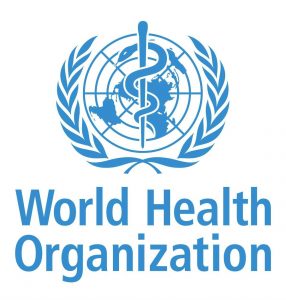
The World Health Organization’s (WHO) has published a ‘Zero-Draft’ of the Pandemic Treaty, aiming to bring in Global and National-Level Pandemic Preparedness.
- The treaty aims to address the challenges posed by pandemics and other global health emergencies.
- The zero-draft of the pandemic treaty was established based on recognising the catastrophic failure of the international community in showing solidarity and equity in response to the Covid-19 Pandemic.
- It calls for increased global coordination and cooperation in the preparation for and response to pandemics and other global health emergencies.
- It emphasizes the need to strengthen health systems in all countries, particularly in low- and middle-income countries, to ensure they are better prepared to respond to pandemics and other global health emergencies.
- It calls for improved access to essential health technologies, such as vaccines, diagnostics, and treatments, during pandemics and other global health emergencies.
- It calls for increased investment in research and development of health technologies, particularly for diseases that pose a significant threat to global health.
- It calls for increased transparency and sharing of information about pandemics and other global health emergencies, including data on the spread of diseases and the effectiveness of interventions.
PM KUSUM:
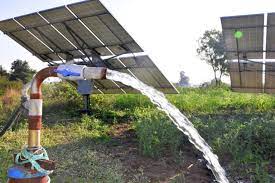
The Ministry of New and Renewable Energy (MNRE) has extended the deadline to install 30,000 MW solar power capacity in rural India to March 2026 under PM-KUSUM (Pradhan Mantri Kisan Urja Suraksha Evam Uttham Mahabhiyan).
- The PM-KUSUM was launched by the MNRE in 2019, in order to endow installation of off-grid solar pumps in rural areas and reduce dependence on grid, in grid-connected areas.
- Components:
- 10,000 MW of decentralized ground-mounted grid-connected renewable power plants.
- Installation 20 lakh solar-powered agriculture pumps
- Converting 15 lakh agriculture pumps, already connected to the grid, into solar.
- Objective:
- It aims to enable farmers to set up solar power generation capacity on their arid lands and to sell it to the grid.
- It also seeks to increase the income of farmers by allowing them to sell surplus solar power to the grid.
Post Office Monthly Income Scheme:
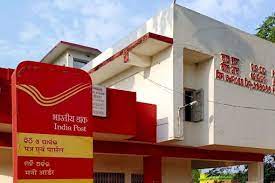
Union Finance Minister recently announced the increase of deposit limit for the Post Office Monthly Income Scheme (POMIS).
- The deposit limit for the Post Office Monthly Scheme (POMIS) has been revised for a single account to Rs.4.5 lakh to Rs. 9 lakh and 15 lakh from Rs. 9 lakh for joint account holders.
- Post Office Monthly Income Scheme (POMIS) is a Government of India backed small savings scheme that allows the investor to invest a specific amount every month.
- Eligibility:
- A resident of India. NRIs are not eligible to invest in this scheme
- Individual above the age of 10 years.
- Number of holders: At least 1 and at most 3 individuals can hold post office MIS.
- Maturity Period: 5 years
- Maximum limit: If you open an MIS scheme individually, then the maximum amount you can invest is 4.5 lakh. ( Increased to Rs.9 lakh in Budget 2023-24)
- If the account is opened jointly, the investment limit will be 9 lakh. (Increased to Rs.15 lakh in Budget 2023-24)
- Lock-in period:On opening a Post Office Monthly Income Scheme, there will be a lock-in period of 5 years during which you cannot withdraw any money.
- Transferable: POMIS account is transferable from one post office to another.
- Premature withdrawal is allowed after one year of opening the account with a penalty.
- Any income from this scheme does not come under TDS or tax deduction.
Centre For Development Of Advanced Computing:

The Centre for Development of Advanced Computing (C-DAC) is working on the country’s first indigenously designed and developed family of microprocessors.
- Centre for Development of Advanced Computing (C-DAC) is the apex research and development wing of the Ministry of Electronics and Information Technology.
- It was established in the year 1988.
- Its main purpose was to carry out research and development in Electronics, IT and other associated areas.
- It was setup to build Supercomputers in context of denial of import of Supercomputers by USA.
- C-DAC build India’s first indigenously built supercomputer Param 8000 in 1991.
- Param 8000 is India’s first supercomputer ,was developed by C-DAC in 1991.
Sant Guru Ravidas Jayanti :

The President of India greeted fellow citizens on the eve of the birthday of Sant Guru Ravidas.
- Guru Ravidas Jayanthi is commemorated on Magh Purnima, the day of the full moon in the month of Magh, according to the Hindu Lunar calendar.
- Guru Ravidas was a 14th-century famous Bhakti Movement saint.
- He abandoned saguna (with attributes, image) forms of supreme beings, and focussed on the nirguna (without attributes, abstract) form of supreme beings.
- Ravidas was a disciple of Sant Kabir and the founder of the Ravidassia religion.
- The Sikh scripture, Guru Granth Sahib, contains forty-one of his devotional songs and poems.
- The famous saint poetess, Mirabai was a disciple of Guru Ravidas.
Shendurney Wildlife Sanctuary : Annual Faunal Survey
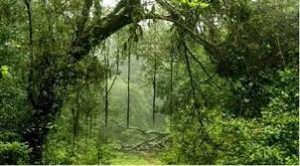
The annual faunal survey was held in the Shendurney wildlife sanctuary.
- Shendurney Wildlife Sanctuary is a protected area located in the Western Ghats of India, in the Kollam district of
This Sanctuary derives its name from Chenkurinji (Gluta travancorica), a species endemic to this region. - It comes under the control of Agasthyamalai Biosphere Reserve.
- Flora: Tropical evergreen and semi-evergreen forests cover a major area of the sanctuary.
- Fauna: Includes tigers, gaurs, elephants, sambar deers, sloth bears, Malabar Raven, Malabar banded swallowtail, Red-disc Bushbrown, etc
What Are Muons?
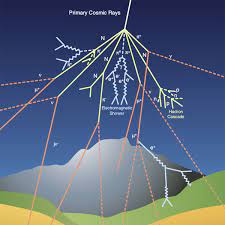
As per a new study, researchers are examining the fortress wall of Xi’an, an ancient city in China, by using tiny outer space particles called muons that can penetrate hundreds of metres of stone surfaces.
- To analyse 14 kilometres long rampart, researchers deployed a technique called muon tomography or muography, which uses muons to generate three-dimensional images of such large structures.
- Muons are subatomic particles raining from space.
- The muon was discovered as a constituent of cosmic-ray particle “showers” in 1936 by the American physicists Carl D. Andersonand Seth Neddermeyer.
- They are created when the particles in Earth’s atmosphere collide with cosmic rays — clusters of high-energy particles that move through space at just below the speed of light.
- It has two forms, the negatively charged muon and its positively charged antiparticle.
- These particles resemble electrons but are 207 times as massive.
- Therefore, they are sometimes called “fat electrons”.
- Muons are so heavy, they can travel through hundreds of metres of rock or other matter before getting absorbed or decaying into electrons and neutrinos
- They are highly unstable and exist for just 2.2 microseconds.
- Muon tomography was first used in the 1960s, it has only recently gained widespread use among researchers, particularly in archaeology.
- It is conceptually similar to X-ray but capable of scanning much larger and wider structures, owing to the penetration power of muons.
- All that is required is to place a muon detector underneath, within, or near the object of interest.
- The detector then tracks the number of muons going through the object from different directions, to form a three-dimensional image.
- The image is then compared with a muon image of the “free sky.”
- This indicates how many muons have been blocked.
- The final picture is essentially a shadow of the object, in the light of cosmic muons.”
Visva-Bharati University : To Get UNESCO Heritage Tag

Visva-Bharati University will soon get the ‘heritage’ tag from UNESCO to take the distinction of world’s first living heritage university.
- Visva Bharati university is one of India’s major Central Government funded autonomous university located in Santiniketan, West Bengal.
- It is well-known as a distinguished centre for Visual Art practice and research in India.
- The university was established in 1921 by Nobel Prize Laureate, Rabindranath Tagore.
- It was named after Nobel Laureate Rabindranath Tagore until Visva-Bharati Society was registered as an organisation in May 1922.
- The institution was given the status of Central University in 1951 through a central Act.
- Its first vice-chancellor was Rathindranath Tagore, the son of Rabindranath Tagore, and the second vice-chancellor was grandfather of another Nobel Laureate economist Amartya Sen.
- The President of India appoints the Vice-chancellor of the University.
- Visva Bharati University is renowned for its cultural festivals called Poush Mela and the Basanta Utsab which attracts a number of artisans from all across the country.
Voluntary Settlement Scheme:
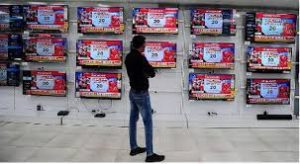
The Union Budget 2023 announced a “voluntary settlement scheme with standardised terms” to amicably end commercial/contractual disputes concerning government undertakings in which arbitral awards are under challenge.
- The budget 2023-24 has proposed a scheme for settling contractual dispute named Vivad se Vishwas II (Settling Contractual Disputes).
- Voluntary settlement scheme introduced to settle contractual disputes of government and government undertakings; wherein arbitral award is under challenge in a court.
- This will be done by offering graded settlement terms depending on pendency level of the dispute.
- Under the scheme, voluntary option is given to the private sector to come into the scheme or not.




